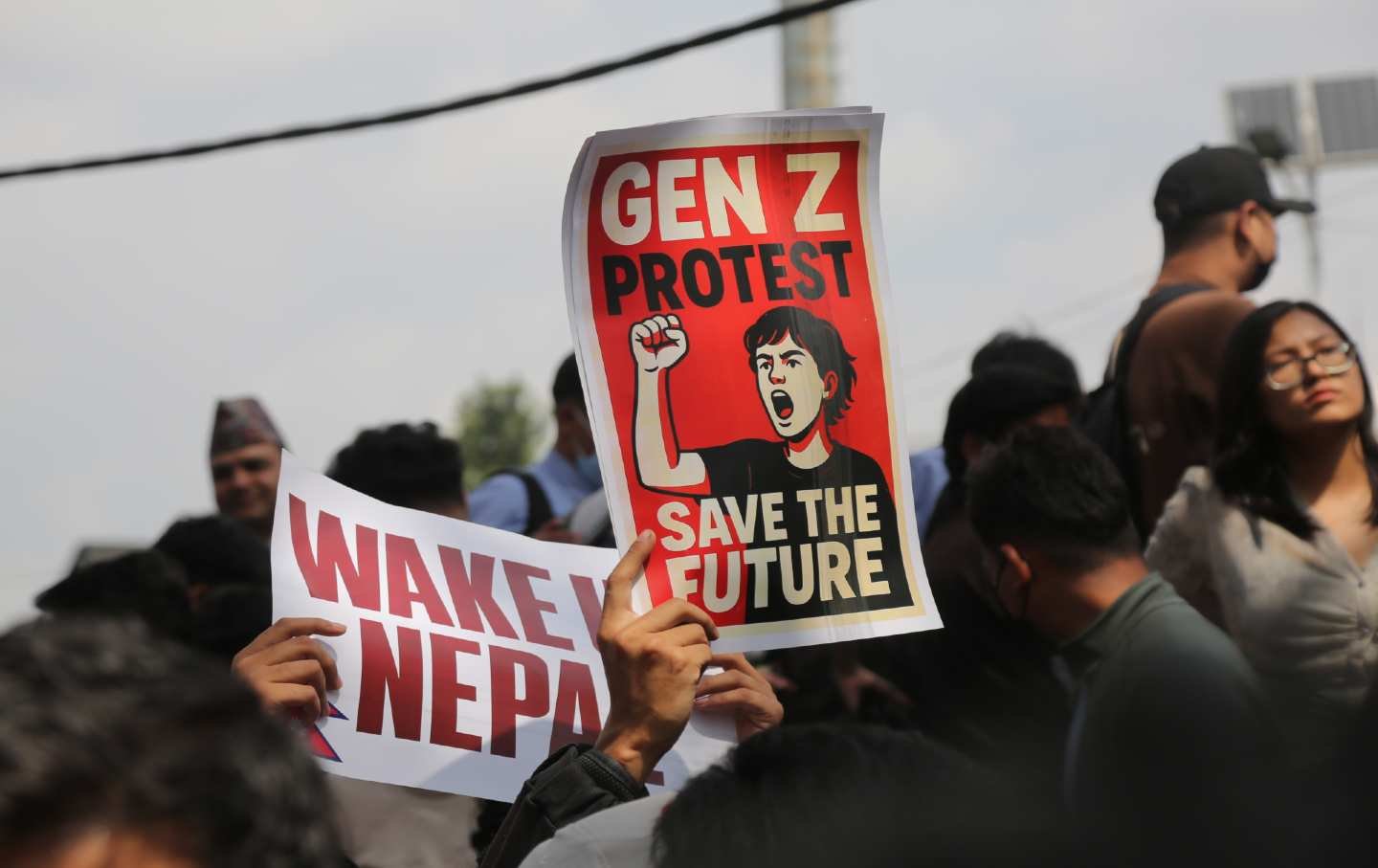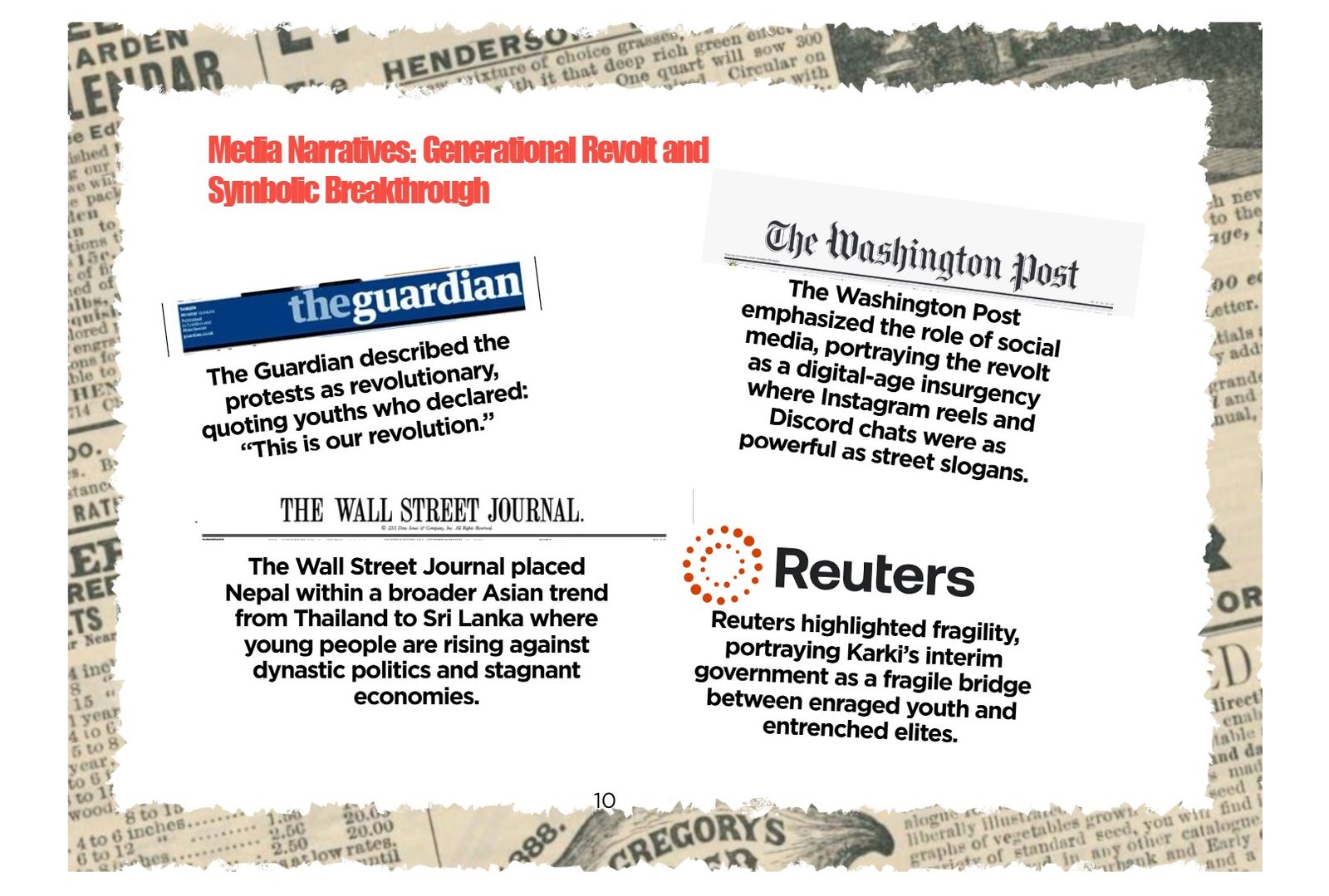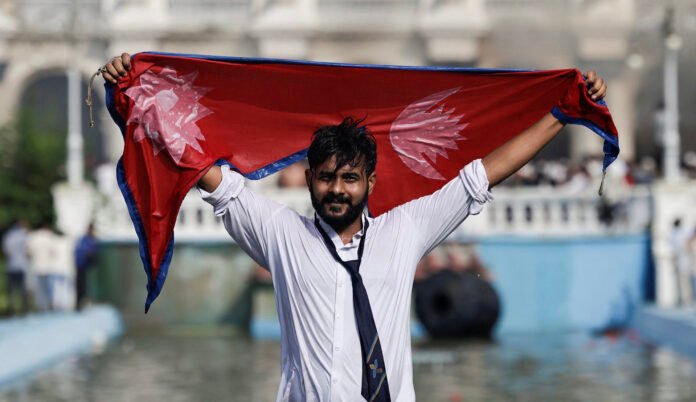A Spark: The Social Media Blackout
The revolt that would shake Nepal’s fragile democracy began not with a bomb or a coup, but with a digital blackout, not electrical. On a late August 2025 morning, the government abruptly blocked access to apparently 26 of the most widely used social media platforms, including Facebook, X, YouTube, Instagram, and WhatsApp. The official justification was regulatory: none of these platforms, authorities argued, had complied with new rules requiring local registration and tax oversight.
But for Nepal’s young citizens, the move was more than bureaucratic enforcement. It felt like an attack on their very existence. Social media in Nepal is not a luxury; it is the marketplace, the classroom, the town hall, the stage for dissent. Platforms host everything from small businesses to wedding announcements, from grassroots campaigns to dissident poetry. For Generation Z, a cohort that makes up nearly half of Nepal’s population, the blackout was an erasure of voice, income, and identity.
What the government underestimated was how deeply digital life had fused with political expression. Within hours, anger spread across encrypted chats, VPN channels, and proxy forums. Memes mocked the ban. QR codes with protest meeting points circulated. The blackout, intended to silence dissent, became the rallying cry for resistance.
From Protest to Revolt
Street demonstrations began modestly outside Tribhuvan University and in Kathmandu’s Durbar Marg. But unlike earlier movements that often fizzled without charismatic leadership, this revolt thrived on leaderlessness. Youth collectives like Hami Nepal, a decentralized online network, coordinated marches and sit-ins. Discord servers and Telegram channels became command centers. Strategy flowed horizontally, through peer-to-peer communication rather than orders from above.
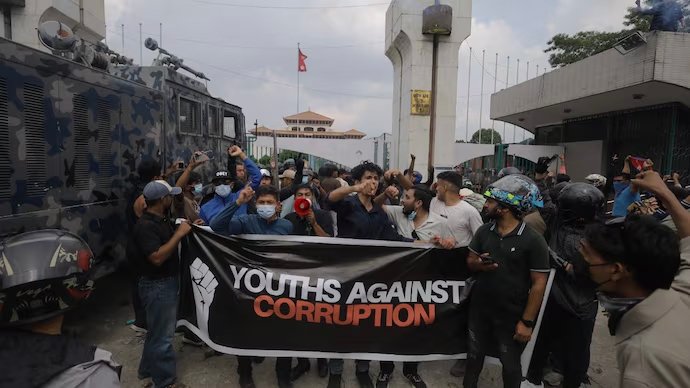
This was no mere defense of digital rights. Long-simmering grievances boiled over. Nepal’s young felt betrayed by decades of elite corruption, nepotism, and privilege. Jobs were scarce, connections mattered more than merit, and children of ministers flaunted imported cars and designer clothes online while ordinary graduates drove taxis or left for migrant labor abroad. The blackout turned their disillusionment into fury.
Soon, the protests swelled beyond Kathmandu. Pokhara, Biratnagar, and Janakpur saw marches that clogged streets and squares. Confrontations with police grew more violent. Security forces deployed tear gas, rubber bullets, and water cannons. Then, in a chilling escalation, live rounds were fired into crowds. Protesters stormed barricades, breached the parliament building housed at the International Convention Centre in New Baneshwar, and torched political party offices.
By early September, the toll is believed to be as high as 72 people dead, more than 2,100 injured. What had begun as a protest over internet access had become the deadliest youth uprising since Nepal’s 2006 People’s Movement.
Human Rights Groups: Condemnation and Demands
If the social media ban had sparked outrage, it was the state’s lethal response that drew the sharpest condemnation. Human Rights Watch (HRW) declared that Nepal had shown an “appalling disregard for the lives of its own citizens.” In its September 8 report, HRW documented the police’s use of live ammunition, which killed at least 19 protesters in a single day.
Amnesty International demanded an independent inquiry and urged authorities to roll back digital restrictions. The UN High Commissioner for Human Rights, Volker Türk, said he was “appalled” and warned Nepal to comply with international norms. The International Federation for Human Rights (FIDH) and the World Organisation Against Torture (OMCT) issued a joint statement demanding an immediate end to brutality.
What united these voices was a clear message: Nepal’s youth had legitimate grievances, and meeting them with bullets was indefensible.
Political Implosion and an Interim Reset
The violence reached a breaking point on 9 September. Prime Minister K.P. Sharma Oli, long accused of authoritarian tendencies and cozying up to Beijing, resigned under pressure. Parliament was dissolved amid chaos.
The Nepal Army stepped in, occupying airports, broadcasting stations, and government buildings to “preserve order.” In a dramatic twist, President Ram Chandra Poudel constitutionally anchored the appointment under the legal provision of Nepal’s Constitution of Sushila Karki as interim prime minister. Her appointment was hailed as historic, Nepal’s first female head of government, but also legally dubious, since former justices are barred from political office under the constitution.
Theories of Conspiracy: Hijacked Revolt or Genuine Uprising?
Not everyone accepted the youth movement as entirely organic. Former Prime Minister Oli and his allies argued that “vested interests” disgruntled insiders, rival party cadres, or even foreign hands had co-opted the protests to engineer regime change.
Supporters of this theory pointed to two factors:
- The speed of escalation, from digital censorship to government collapse within weeks.
- The selective targeting of party offices suggested political motives beyond grassroots outrage.
While hard evidence of manipulation remains elusive, these suspicions highlight Nepal’s history of factional intrigue, where mass movements often intersect with power struggles behind closed doors. Whether authentic or hijacked, the revolt undeniably altered the political landscape.
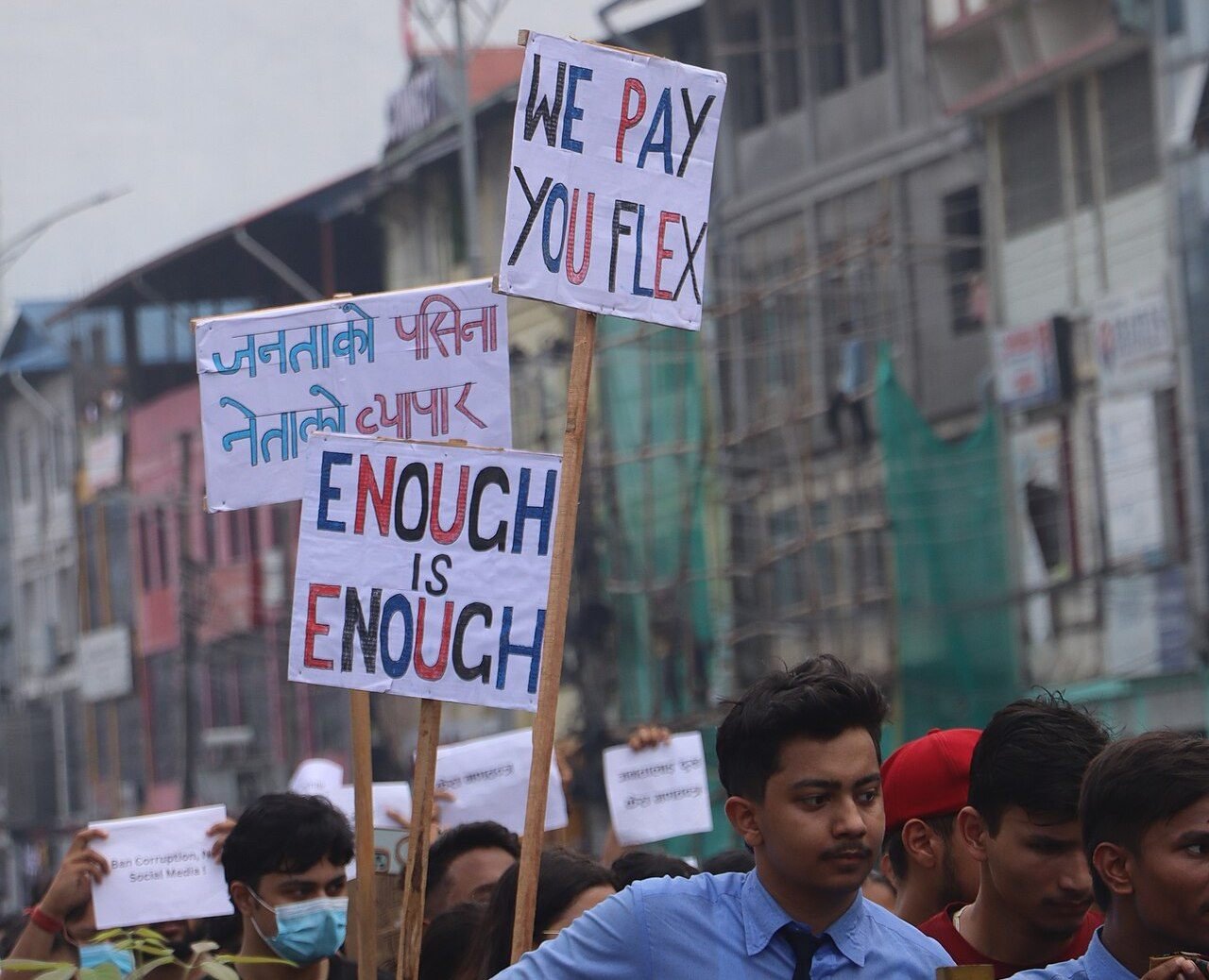
Geopolitics: Ripples Beyond Nepal
The uprising did not unfold in isolation.
- India, wary of instability along its Himalayan border, watched with mixed feelings. Oli’s exit was seen by some Indian analysts as diminishing Chinese influence in Kathmandu. Yet New Delhi also feared that prolonged instability could trigger refugee flows or embolden secessionist sentiments in sensitive border states.
- China remained cautious, urging “stability and order,” but analysts noted Beijing’s discomfort with the fall of an ally who had tilted Nepal closer to its orbit.
- Global observers drew parallels with Hong Kong, Iran, and Myanmar, warning that while social media movements can force quick change, they risk being more symbolic than structural unless institutional reforms follow.
Thus, Nepal’s upheaval was not just a national crisis but a regional cautionary tale about youth-driven revolts in fragile democracies.
What’s at Stake: Beyond the Revolt
The Gen Z revolt is now a defining chapter in Nepal’s democratic evolution, but it leaves behind a series of pressing, unresolved questions. At the heart of the crisis lies the issue of justice and accountability: will investigations truly bring perpetrators to book, or will impunity once again prevail as it has so often in Nepal’s past?
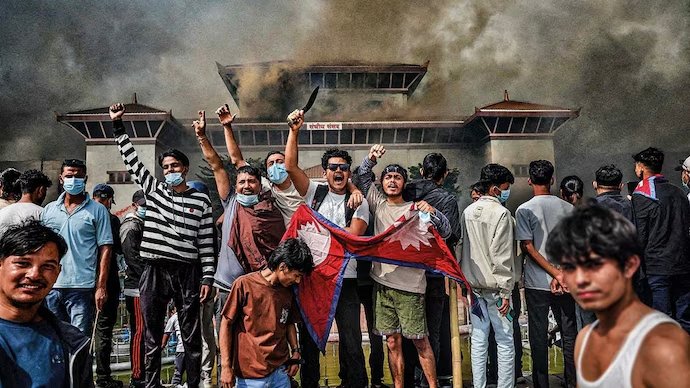
Equally urgent is the question of political renewal. Can upcoming elections finally break the cycle of dynastic dominance and entrenched cronyism, or will the old order reassert itself under new guises? For the young generation itself, the challenge is whether their collective rage can be channelled into durable institutions student unions, watchdog bodies, and civic groups that can sustain change, rather than erupting in episodic bursts of protest. And underlying it all is the battle over digital freedoms: will Nepal embrace the internet as a democratic space for expression and dissent, or continue to treat it as a threat to be curtailed? The coming months will determine whether this movement was a fleeting eruption of anger or a structural turning point in Nepal’s political history.
A Moment of Reckoning
Nepal’s Gen Z revolt began with a blackout but illuminated the fractures of a nation. It exposed how deeply digital life shapes modern dissent, how fragile political legitimacy remains in a country scarred by corruption, and how determined a new generation is to claim its voice.
As interim Prime Minister Sushila Karki steers the ship toward 2the 026 elections, the stakes are immense. If she succeeds in restoring trust, investigating abuses, and opening political space, this revolt may be remembered as the painful birth of a more accountable democracy.
